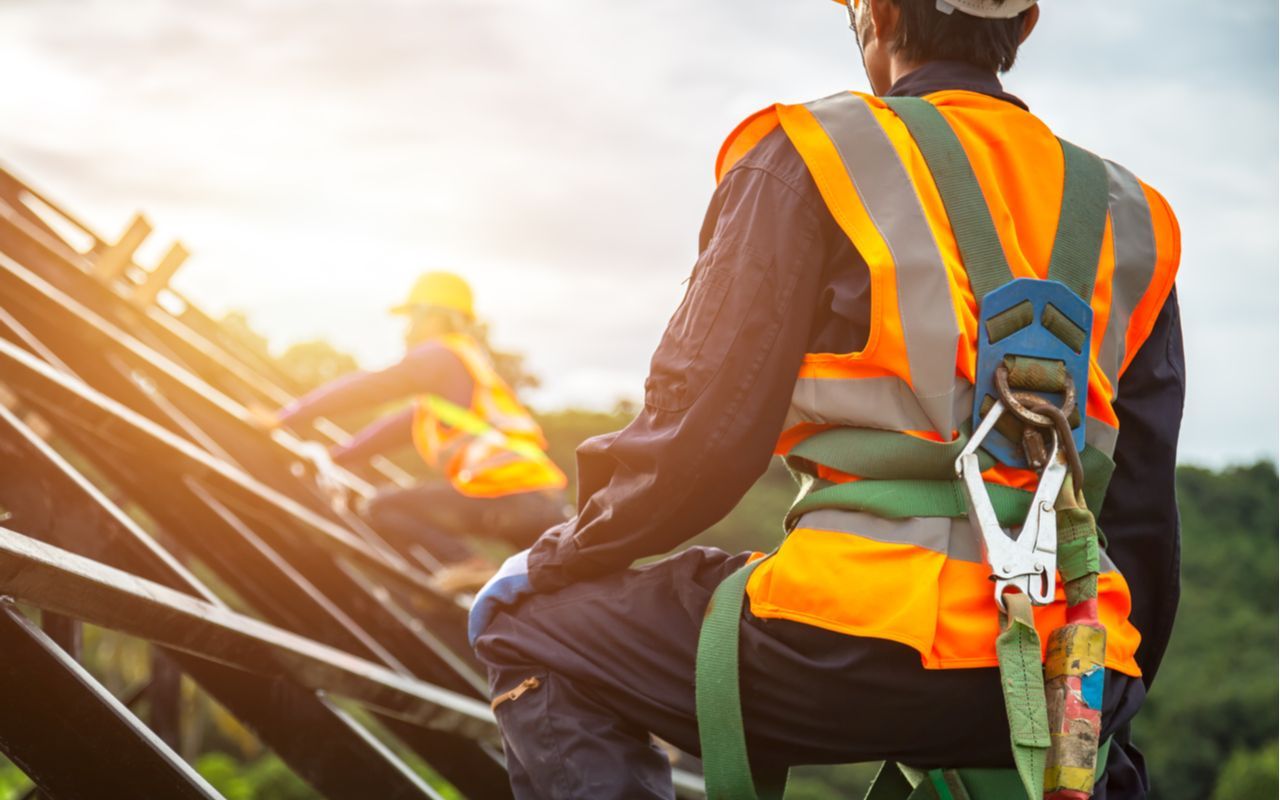The construction industry presents a number of safety concerns and everyday hazards on the worksite. Additionally, in the warm summer months, many hazards can be exacerbated by excessive heat and moisture.
By nature, the industry necessitates handling and maneuvering heavy materials and machinery, heights and tight spaces, as well as electricity and heat concerns. The employer must provide and require proper training, personal protective equipment, health and safety plans and protocols, as well as job safety reviews both before any job tasks begin and throughout the active workday. On the worker’s end, it’s important to understand the risks, qualifications, safety policies and tools involved in any job.
The Fatal Four
Occupational Safety and Health Administration delineates construction accidents into the top four categories and causes of fatalities in the workplace: falls, struck by objects, electrocutions and caught in/between. In 2019, more than 5,300 workers were fatally injured on the site. With proper care and maintenance, employers, contractors and jobsite managers can mitigate these risks and prevent serious on-the-job injuries.
- Falls. The largest percentage of fatal injuries occur from incidents of workers falling. Workers can fall from significant heights or into lower areas without proper harnessing, fall protection, scaffolding or through unprotected/unmarked sides and holes. At six feet, general fall protection is required; at 10 feet, scaffolding is required; at 15 to 30 feet, steel erection is required; and above this height, either a guardrail system, cover or personal fall arrest system to prevent life-threatening injuries is required. The employer is required to monitor the job site for tasks performed at this height as well as new holes or improperly installed safety measures.
- Struck by Objects. With the reality of heights on the worksite, workers are also in danger of being struck by falling or tipping objects and equipment. The four main hazards are rolling objects, swinging objects, falling objects and flying objects—and often, the injured party may not be involved in the work that causes the object to fall or come loose. In addition to employees following OSHA safety guidelines and being provided with and wearing proper workplace PPE, including hardhats and high-visibility clothes, the employer and site manager must provide all required training and ensure/maintain the qualifications of workers in job positions of operators, signal persons and riggers.
- Electrocutions. Fatal electrocution accidents are the second deadliest hazard of the “fatal four.” Risks associated with active electricity include close proximity to power circuits, exposed/spliced wiring and lines, lack of grounding and insulation, nearby water and more. Employers and site managers are required to preemptively safeguard the worksite and stay vigilant during the course of work to ensure workers maintain safe distances from electrical units, only operate electric tools that are grounded/double-insulated and have the proper training to identify potential hazards before tragedy strikes.
- Caught In/Between. “Caught in/between” accidents occur when a worker becomes trapped or pinned between walls, machinery or large equipment. These incidents can also occur when trenches or excavation structures collapse in on the worker or when workers become caught between moving equipment. Managers and employers are responsible for providing proper sloping, shoring, benching and shield systems for trenches, as well as ensuring proper working order for all moving machinery and large equipment.
Heat Safety
The summer months come with intense heat and sweltering work conditions, which can lead to heat stress, stroke and other injuries from fainting, falling and weakness. The largest danger is present in the beginning days of working in the heat as the body has not had enough time to acclimate and build a heat tolerance. During this time particularly, it is crucial for workers to have access to plentiful water, rest and shade. Further, both employers and employees have a responsibility to monitor each other and themselves for signs of illness and heat-related fatigue to avoid incidents of the fatal four injuries.
Heat can also make the physical components of the worksite more dangerous, with construction materials becoming hot to the touch and the heat worsening electricity/spark-related incidents. Additionally, handheld tools and surfaces can become slippery with increased sweating and humidity.
Safety in the Construction Industry
While the construction industry has a multitude of potential hazards for workers, especially in the hot summer months, many can be mitigated with the implementation of proper training, safety measures, policies and the use of PPE.
When it comes to avoiding accidental injuries on the construction site, all parties must be aware of changing situations and weather, express when the proper training or safety precautions are not being met, and consistently monitor all aspects of the job at hand to avoid injuries and keep all members of the worksite safe.






